Tips from Animal Behaviourist Mark Vette to help your dog feel more at ease
Anxiety in dogs can show up as fear, restlessness, barking, avoidance, or even aggression—and it can deeply affect their quality of life. If you’re living with a nervous or fearful dog, you’re not alone. The good news? With patience and the right strategies, many dogs can learn to feel safe and confident again.
Animal Behaviourist Mark Vette shares his tips on how to help your anxious dog feel more at ease in the world
1. Understand the root cause
Start by identifying what’s triggering your dog’s anxiety. Is it people, other dogs, loud noises, new places, or being alone?
The most common underlying reasons for a dog’s anxiety include:
- Lack of early socialisation (especially between 8–16 weeks) leading to discomfort with new people or dogs
- Past trauma (e.g. dog attacks, illness, harsh training)
- Breed tendencies (some breeds are naturally more sensitive)
- Overwhelming environments or inconsistent handling
- Lack of early exposure to key stimuli or experiences (e.g. never being left alone as a puppy, not experiencing road traffic etc)
Understanding the “why” helps you make better decisions about the “how.”
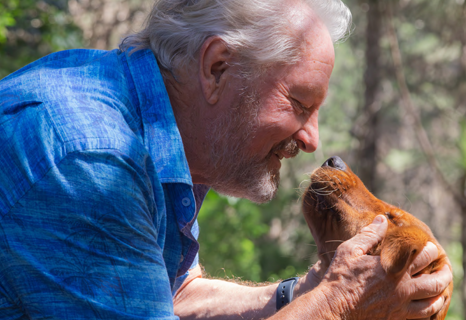
Mark Vette is a world-renowned Animal Behaviourist, Zoologist and Trainer. He brings together a unique combination of academic studies with 40 years of applied clinical animal behaviour consulting and treatment. Mark is a member of the International Association of Animal Behaviour Consultants. This article was written by Mark and the views expressed are his own.
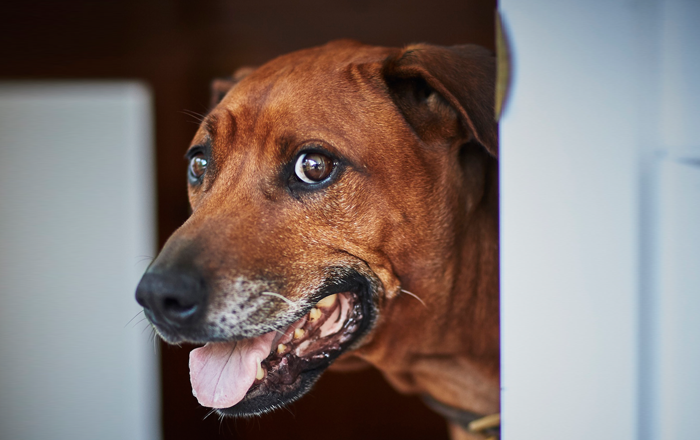
2. Focus on trust first
Before training or therapy, your dog needs to trust you. A strong relationship helps your dog feel safe, even when the world feels scary.
Build trust by:
- Being gentle, predictable, and kind
- Controlling access to resources (food, toys, affection) to provide structure
- Playing together regularly—it’s a powerful way to bond
- Doing regular training, especially with a clicker - this helps build a strong trust bond
Let your dog know you’ve got their back, so they don’t feel they have to manage everything alone.
3. Use marker or clicker training
Clicker training isn’t just for tricks—it’s a game-changer for fearful dogs. It helps mark the exact moment your dog does something right and in time, it can help shift your dog from fear into a calm and focused learning state in a potentially triggering situation. Being able to switch your dog into learning state is absolutely necessary to re-wire their anxious behaviours and rebuild emotional resilience.
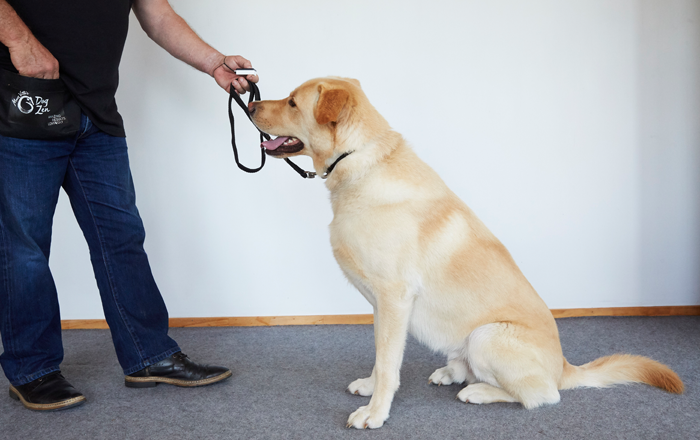
Getting started with clicker training:
Charge the clicker
Before using it for training, your dog needs to learn that the click means a treat is coming.
- Click the clicker, then immediately toss a treat
- Repeat 10–15 times: click → treat, click → treat
- Do this over a few short sessions so your dog associates the sound with something positive (food!).
Use it to reinforce simple behaviours
Once your dog knows what the click means, begin using it with basic commands:
- Ask for a “Sit”
- The moment your dog’s bottom hits the floor, click
- Then give a treat (within 3 seconds ideally).
- The timing of the click is critical—it should mark the exact second your dog does the right thing
Apply it in real life situations
Start clicking and rewarding when your dog:
- Looks calmly at a trigger (like another dog or a loud noise)
- Lies down and relaxes in a busy environment
- Shows curiosity instead of fear
- Remains non-vocal in a potentially triggering scenario
- Orchestrate set-ups to expose your dog to their triggers in a controlled way, starting with the least triggering then gradually working your way up
This helps your dog build positive associations with their triggers and teaches them what behaviour leads to good outcomes.
Keep sessions short and positive
- Aim for 5–15 minutes at a time
- Always end on a success
- If your dog is too anxious to eat treats, the situation may be too stressful—back off and try from a greater distance or in a calmer setting
- Use very high palatability food and trim your dog’s diet for the training period to increase food motivation (feed the difference during your training sessions)
If you prefer not to use a clicker, you can use a verbal marker instead. A cheerful, consistent “Yes!” in the same tone every time works well. Just remember, like the clicker, it should always be followed by a reward.
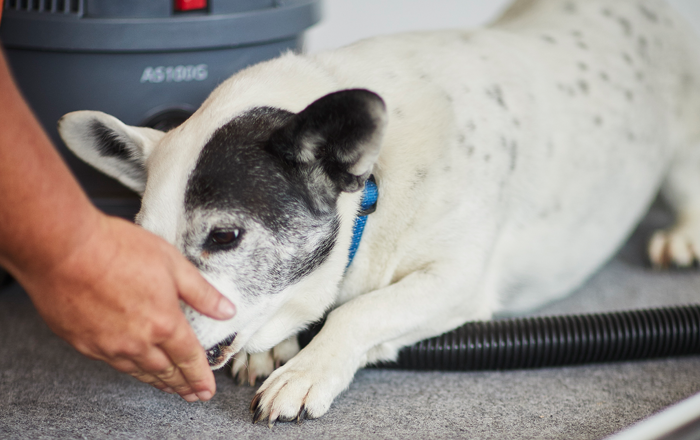
4. Try desensitisation training
Desensitisation involves gradually exposing your dog to what scares them in a safe, positive way.
Let’s use fear of the vacuum as an example:
- Start from afar: Place the vacuum off in a corner. Click and reward with treats while they remain calm nearby.
- Move closer: Over multiple sessions, toss treats closer to the vacuum. Eventually, put treats on it. Click as your dog eats the treats.
- Add movement: Have someone move the vacuum (still off) while you click and reward calm behaviour.
- Introduce sound: From a distance, turn it on at a low level for a few seconds. Reward your dog if they stay calm.
- Combine sound and movement: Begin to move the vacuum while turned on, gradually coming closer and closer if your dog is coping.
Go at your dog’s pace. If they stop eating or show signs of stress, pause or move back a step. Use the highest value treats (something your dog REALLY loves) and do this training before meals, when your dog is nice and hungry. These principles can be applied to any anxiety trigger!
5. Help them recover from frights
If something gives your dog a fright:
- Stay calm and avoid overreacting
- Use simple commands or a favourite game to redirect them
- Gradually reintroduce the trigger in a positive way, using lots of treats (and your clicker, as in the vacuum example above!)
Each time your dog successfully recovers, their resilience grows.
6. Set up a safe space
Create a retreat your dog can go to when they feel overwhelmed. This could be:
- A covered crate (introduced positively)
- A quiet room
- A comfy bed in a low-traffic area
Having a safe zone can help your dog feel more at ease and recover if they feel overwhelmed.

7. Reduce environmental stress
Some dogs are anxious because their daily environment is unpredictable or overstimulating.
Reduce stress by:
- Keeping a consistent routine
- Limiting access to known triggers (e.g. rowdy guests, off-leash dogs) until you are able to build up their tolerance through training
- Playing calming music or using white noise
- Using tools like Rescue Remedy or a ThunderShirt to encourage calmer responses
Talk to your vet about short-term medication if your dog struggles with anxiety, especially during events like fireworks or thunderstorms.
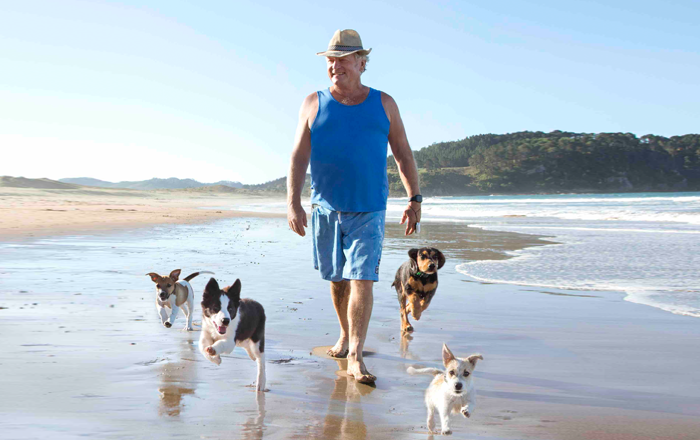
8. Don’t forget exercise and enrichment!
Anxious energy needs an outlet! Daily physical and mental activity helps reduce tension and improve confidence.
Try:
- Walks in quiet environments
- Scent games and “find it” activities
- Tug or flirt pole play
- Puzzle feeders and frozen KONGs
- Training new tricks using a clicker or marker
A tired brain is more likely to be a calm brain. Particularly focus on giving your dog plenty of opportunity to sniff and explore the natural environment - sniffing engages the parasympathetic nervous system (the "rest and digest" system), which can lower heart rate and stress hormones. It’s especially helpful for anxious dogs.
9. Use calm dog role models
If your dog has a confident, friendly canine companion, that dog can be a huge help during training sessions and exposure to your dog’s triggers.
Their calm presence and behaviour can:
- Show your anxious dog there’s nothing to fear
- Emit calming pheromones
- Speed up desensitisation
We call this social facilitation - simply bring the calm, confident dog friend along when introducing your anxious dog to their triggers (for example, have a dog that’s totally unfazed by fireworks nearby when teaching your dog to accept fireworks sounds). Only try this if your dog already feels at ease with the confident dog! You being calm and relaxed also helps similarly.
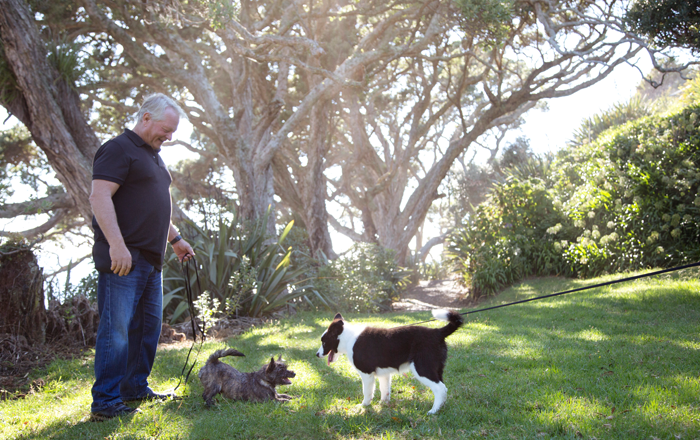
10. Know when to call in help
If your dog’s anxiety isn’t improving, causes aggression or reactivity, or is affecting their health or quality of life, it’s time to consult your vet or a qualified behaviourist. Behavioural training is usually the best way forward to resolve the issue long term, however short-term medication can sometimes be appropriate in conjunction.
Feel free to reach out to me on support@dogzen.com if you’re worried about your dog’s behaviour.
Final thoughts
Helping an anxious dog takes time—but with trust, structure, and positive training, many dogs learn to overcome fear and enjoy life again.
Progress won’t be instant. Focus on small wins, safe experiences, and steady confidence-building. Over time, your dog will begin to feel more comfortable, more relaxed—and more like their true self.
Always consult your vet on the best way to look after your pet. And to avoid unexpected costs, make sure your pet is insured.
Have a look at our pet insurance plans to choose the right insurance plan for your pet.
